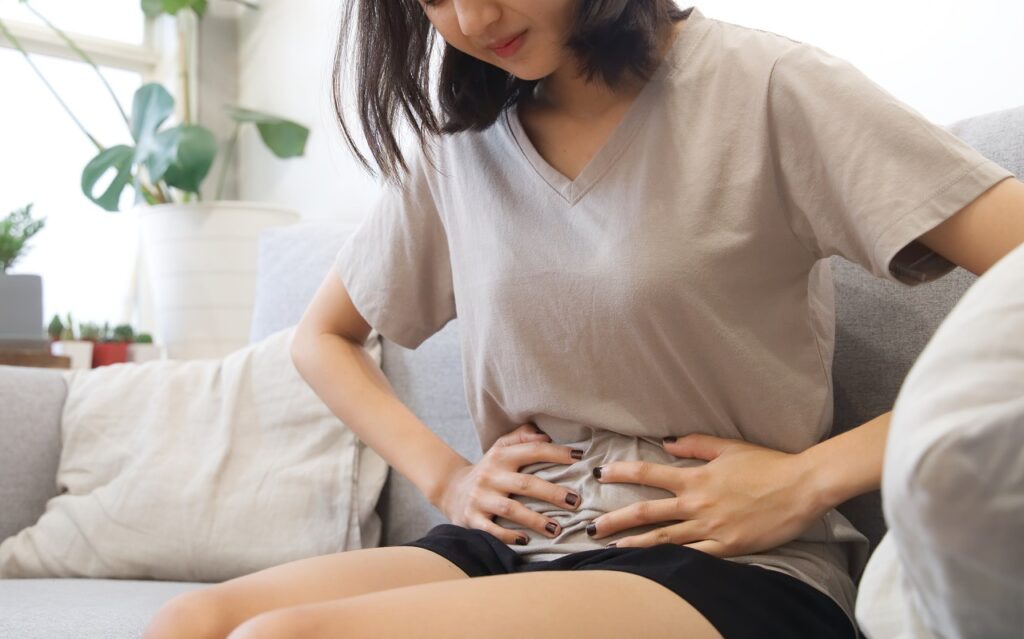
What Is Uterine Fibroids?
Uterine fibroids, also known as Leiomyomas or Myomas, are a common type of noncancerous muscular tumors that can grow in and on the uterus. If someone gets them it doesn’t mean it’ll turn into uterine cancer, uterine fibroids rarely turn into cancer.
Symptoms of Uterine Fibroids
Symptoms are not common in all types of Uterine Fibroids. In some types of fibroids symptoms can be observed, such as heavy menstrual bleeding, back pain, frequent urination, and painful sexual intercourse.
Variations of Appearance
Fibroids appear in a wide range of sizes, shapes, and locations. They show up in the uterus, uterine wall, or on the surface area of the uterus. Fibroids can also attach to the uterus by a stalk or stem-like structure. Some fibroids are so tiny that they can’t even be seen without microscopic lenses. On the other hand, some grow in big masses that affect the size and shape of the uterus.
Fibroids can grow in a cluster or as a single nodule (one growth). Fibroid clusters can grow in size from 1 mm to more than 20 cm (8 inches) in diameter or even larger.
Types of fibroids
Fibroids are named by where they grow:
- Intramural fibroids grow inside the uterus wall
- Submucosal fibroids grow into the hollow cavity of your uterus
- Subserosal fibroids grow out of the surface of your uterus
What are the Causes?
Specific causes of Uterine Fibroids are not known yet. However, according to experts, hormones and some genetic issues might be the reasons behind the occurrence of fibroids.
Genetics: several studies have found few genetic differences between fibroids and normal cells in the uterus. Someone is more likely to get fibroids if her mother or sister has had them.
Hormones: Estrogen and progesterone are the main hormones that make the uterus lining thicken every month during your menstrual cycle. These hormones also seem to affect fibroid growth. During menopause, when hormone production slows down, fibroids usually shrink.
Other growth factors: some growth factors, such as insulin-like growth factors, may play a role in fibroid growth.
Risk Factors of Uterine Fibroids
Fibroids usually grow in women of childbearing age, more likely in the range between 30-40years old. According to experts, they may shrink after menopause.
Several factors may affect a woman’s risk for having uterine fibroids, including:
- Age (older women are at higher risk than younger women)
- Obesity
- Family history of uterine fibroids
- High blood pressure
- Consumption of excess red meat and not enough green vegetables, fruit, or dairy products
- No history of pregnancy
- An early period at a very young age
- Vitamin D deficiency
- Excess use of birth control pills
- Use of soybean milk
Diagnosis of Uterine Fibroids
A doctor may suspect if someone has uterine fibroids just from the feeling uterus during a routine pelvic exam. If the shape of the uterus is found irregular or unusually large, the doctor may suggest further tests, such as:
Ultrasonography; Complete Blood Count (CBC) to detect whether you have anemia (low levels of red blood cells) or other bleeding disorders; Magnetic resonance imaging (MRI); Hysterosonography, where a technician pushes saline into the uterine cavity to make it larger to see fibroids that are growing into the uterus and the lining of the uterus; Hysteroscopy, where a small telescope (hysteroscope) is inserted into the womb through the vagina and cervix so the inside region of the womb can be examined. It takes about 5 minutes to carry out.
Natural cures for Fibroids
Fibroids generally grow slowly, or sometimes not at all. After menopause, fibroids shrink their own. Clinical treatments are needed only when patients are suffering from symptoms. Some natural remedies can be adopted to get relief from symptoms of fibroids.
Weight loss: Losing weight may help to prevent or reduce the size of fibroids.
Nutrition: The right nutrition can help to maintain a healthy weight hence a reduction in fibroids risk. Certain foods also help ease symptoms.
Foods to avoid: Eating too much red meat increases the risk of uterine fibroids. Drinking alcohol should be strictly prohibited.
Foods to eat: Fiber-rich unprocessed foods help, fruits, and vegetables, dry fruits, whole grains, brown rice, lentils, and beans, whole grains, Vitamins, and supplements, milk and dairy may help to reduce fibroids.
Conclusion Uterine Fibrosis is not an issue to get panicked about. Fibroids shrink automatically after menopause. In a major number of cases, fibroids occur without major symptoms hence in these cases patients do not suffer much. However, if the symptoms are painful, some clinical treatments such as medication or surgery can bring relief to the patients.
For more queries you can always consult with the best fertility expert in Siliguri.
